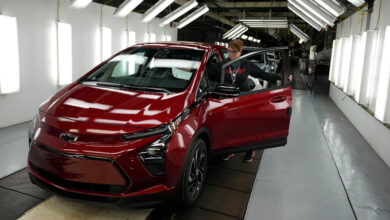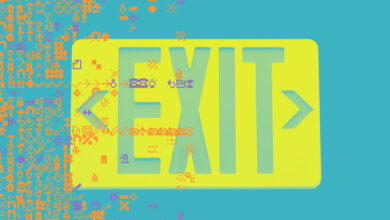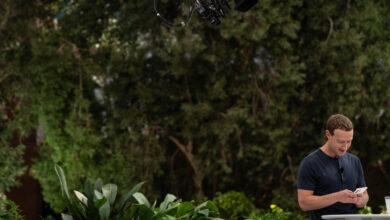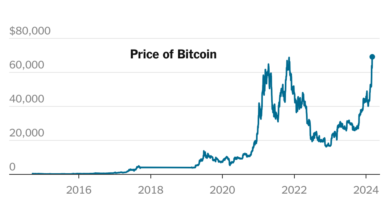When Google arrived in the late 1990s, hundreds of thousands of people were instantly captivated by its knack for taking them wherever they wanted to go on the internet. Developed by the company’s founders Larry Page and Sergey Brin, the algorithm that drove the site seemed to work like magic.
But as the internet search engine expanded its reach to billions of people over the next decade, it was driven by another major technological advance that was less discussed, though no less important: the redesign of Google’s giant computer data centers.
Led by a Brazilian named Luiz Barroso, a small team of engineers rebuilt the warehouse-size centers so that they behaved like a single machine — a technological shift that would change the way the entire internet was built, allowing any site to reach billions of people almost instantly and much more consistently.
Dr. Barroso, who changed the fabric of the internet, died on Sept. 16 at 59. His wife, Catherine Warner, said the cause was cardiac arrest.
Before the rise of Google, internet companies stuffed their data centers with increasingly powerful and expensive computer servers, as they struggled to reach more and more people. Each server delivered the website to a relatively small group of people. And if the server died, those people were out of luck.
But Google took a different tack. Working alongside Urs Hölzle, the company’s first vice president of engineering, Dr. Barroso realized that the best way to distribute a wildly popular website like Google was to break it into tiny pieces and spread them evenly across an array of servers. Rather than each server delivering the site to a small group of people, the entire data center delivered the site to its entire audience.
“Large portions of the hardware and software resources in these facilities must work in concert to efficiently deliver good levels of internet service performance,” he and Dr. Hölzle wrote in their seminal textbook, “The Datacenter as a Computer.”
“In other words, we must treat the data center itself as one massive warehouse-scale computer.”
The computer could deliver a website far more efficiently. And if one machine inside the data center died, the others could pick up the slack. Widespread outages became a rarity, especially as Dr. Barroso and his team expanded these ideas across multiple data centers. Eventually, Google’s entire global network of data centers behaved as a single machine.
Luiz André Barroso was born on June 30, 1964, in Rio de Janeiro. His father, Fernando Luiz Barroso, was a surgeon. His mother, Maria Cecilia Bomfim Vellozo, was a professor of marketing.
After earning a bachelor’s and a master’s degree in electrical engineering from the Pontifícia Universidade Católica in Rio de Janeiro, he enrolled as a Ph.D. student at the University of Southern California, studying computer engineering. By the mid-1990s, he was working as a researcher in a San Francisco Bay Area lab operated by the Digital Equipment Corporation, one of the computer giants of the day.
There, he helped create multi-core computer chips — microprocessors made of many chips working in tandem. A more efficient way of running computer software, such chips are now a vital part of almost any new computer.
But by the late 1990s, DEC was in decline. It made big, expensive computer servers using microprocessors based on the RISC architecture — a dying method of building computer chips — at a time when businesses were moving to lower-cost machines equipped with rival processors from chipmakers like Intel.
In 1998, DEC was acquired by computer maker Compaq. Four years later, Compaq merged with HP. And the leading engineers from DEC’s two research labs — Western Research Lab in Palo Alto, Calif., and the Systems Research Center two block away — soon moved to Google. Luiz Barroso was among them.
These engineers were among the most talented in the field. They included software specialists like Jeff Dean, who is now among those leading Google’s A.I. lab, as well as hardware experts like Dr. Barroso. Together, they designed and built the underlying infrastructure that allowed Google to reach a global audience.
At first, Dr. Barroso worked on software. But as Dr. Hölzle realized that Google would also need to build its own hardware, he tapped Dr. Barroso to lead the effort. Over the next decade, as it pursued his warehouse-size computer, Google built its own servers, data storage equipment and networking hardware.
“Luis was good at realizing what he did not yet know — and then acting on it,” Dr. Hölzle said in an interview. “He was good at seeing what he needed to do in the future.”
For years, this work was among Google’s most closely guarded secrets. The company saw it as a competitive advantage. But by the 2010s, companies like Amazon and Facebook were following the example set by Dr. Barroso and his team. Soon, the world’s leading computer makers were building and selling the same kind of low-cost hardware, allowing any internet company to build an online empire in the way Google had.
In 2020, in honor of his data center work, Dr. Barroso received the Eckert-Mauchly Award, named for John Presper Eckert and John William Mauchly, who built one of the world’s first computers in the 1940s. In March 2022, he was inducted into the American Academy of Arts and Sciences.
In addition to his wife, Dr. Barroso is survived by three siblings.
Like many prominent engineers, Dr. Barroso was also a musician. He played his guitar nearly every day, both at home and at work, and he carried the instrument with him on every vacation, no matter how remote the destination. Earlier this year, he released an album called “Before Bossa,” playing and singing alongside Brazilian jazz musicians Zeca Assumpção and Sergio Reze.
Dr. Hölzle said that Dr. Barroso’s music was a vital part of his work at Google.
Inside the company, there are constant battles over what the future will look like, and Dr. Barroso could navigate these battles, Dr. Hölzle said, thanks to an endearing personality and his guitar.
“He used his guitar as a tool,” he said. “It was a way of getting people to relax and look at their disagreements less as a battle and more as a meeting of humans.”



